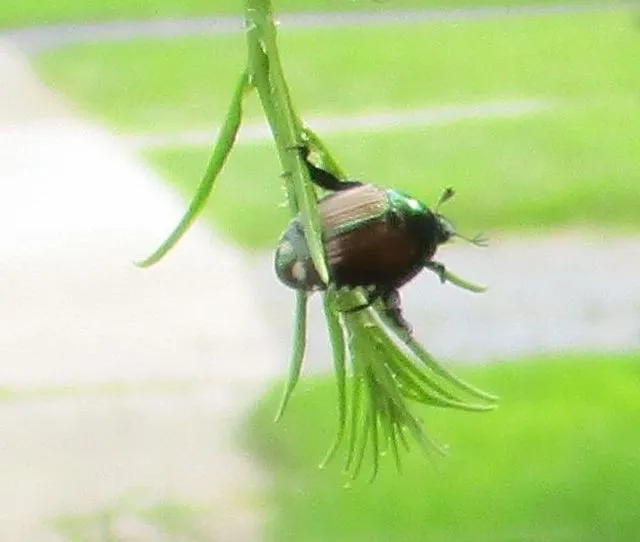
Japanese Beetles (Popillia japonica) are native to Japan and were accidentally introduced here in the U.S. in 1916. They are invasive pests who sadly, are not picky eaters. Adults, as seen in these photos feed on flowers, leaves and fruits of over 300 different plants.
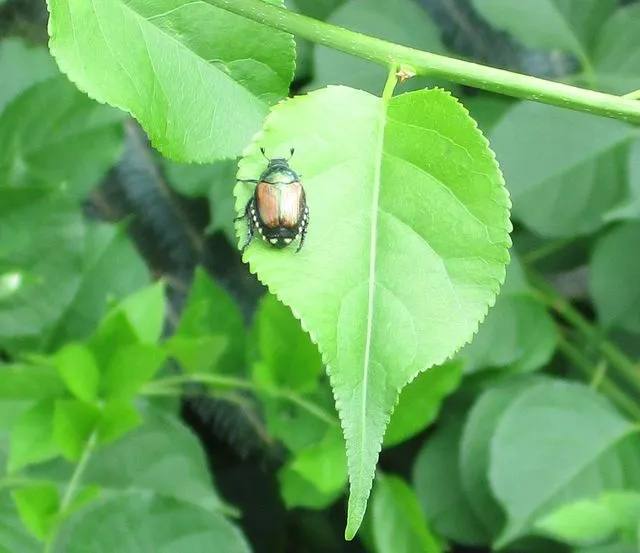
They have metallic green heads and thorax with copper color wing coverings. The white spots that you see on the sides and bottom of the abdomen are actually white tufts of hair.

Here in the north eastern part of the U.S. you can begin to see these Japanese beetles by the end of June or early July. Males arrive a few days before females and when the females arrive, they release pheromones to attract the males and mating begins.
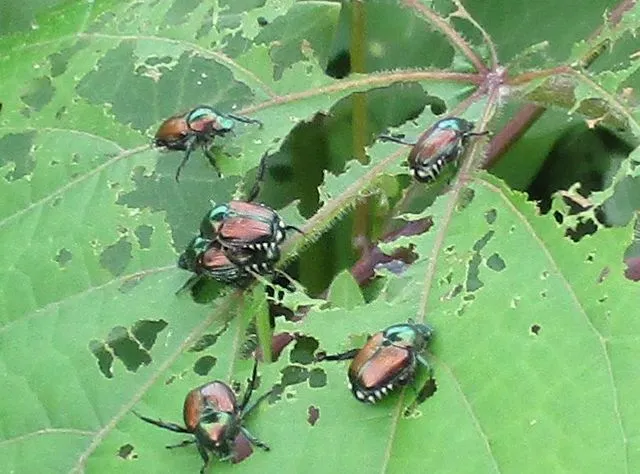
Look at the damage they do to leaves. They skeletonize them by feeding on the soft tissues and leave the veins behind. They usually feed in groups and since the adults live for approximately 2 months, they can do some serious damage.
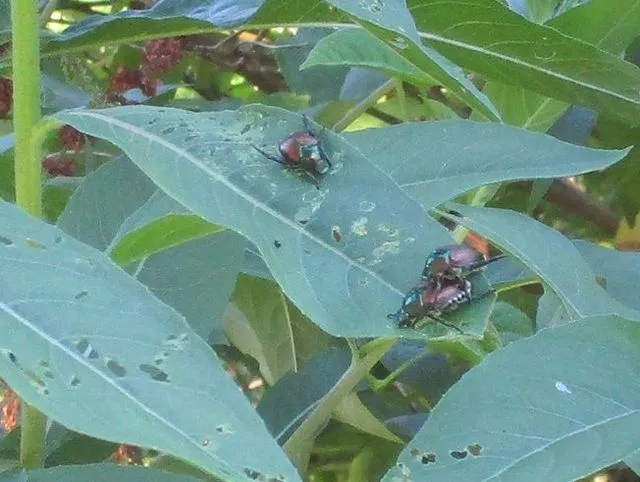
Many insects lay their eggs all at once and then die shortly after but Japanese beetles are one of the exceptions. After mating, females burrow approximately 2-4 inches in the soil and deposit 1-3 eggs, and will stay underground for 1-4 days before emerging again, feeding some more, mates again and goes back into the soil to lay another 1-3 eggs. This process will go on all summer until until she has laid a total of 40-60 eggs. It's no wonder they live so long.
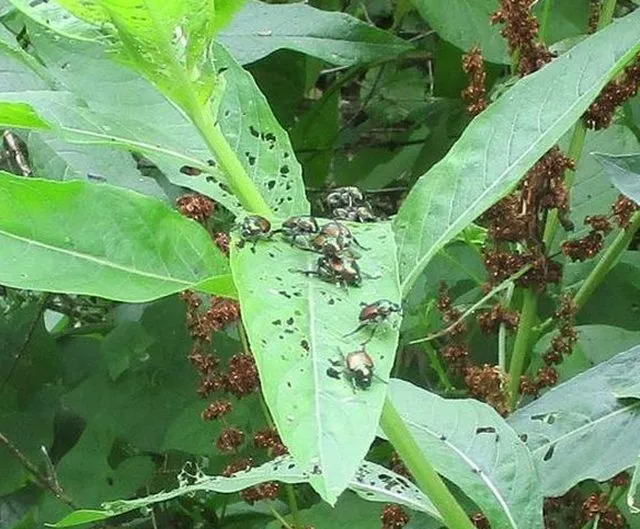
The eggs hatch in 10-14 days and the cream colored larvae with light-brown colored heads are called 'grubs.' Japanese beetle grubs live underground for approximately one year, feeding on grass roots, shedding their skin and growing. When autumn arrives, right before molting for a third time, they burrow deeper in the soil and overwinter. In the beginning of spring, the grubs find grass and plant roots, resume feeding for 4-6 weeks, and then pupate near the top of the soil. One to three weeks later, adult Japanese beetles emerge and begin the cycle anew. Metamorphosis of insects always amazes me because the larvae of the adults look completely different until they pupate and become adults. I always say that nature never ceases to amaze me!
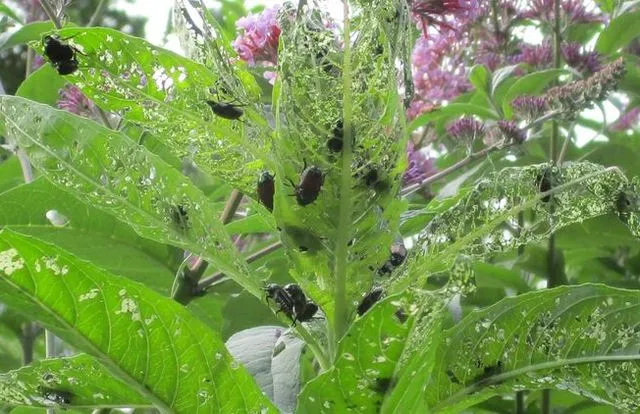
Predators of Japanese beetles are starlings, cardinals, chickens, ducks, geese, moles, toads, skunks and raccoons. They prefer to eat the grubs but will eat the adults at times.
This is my entry for the Amazing Nature Contest created by @adalger. Please go here to find out how you can enter.
Information Source: umn.edu, mo.gov, ufl.edu